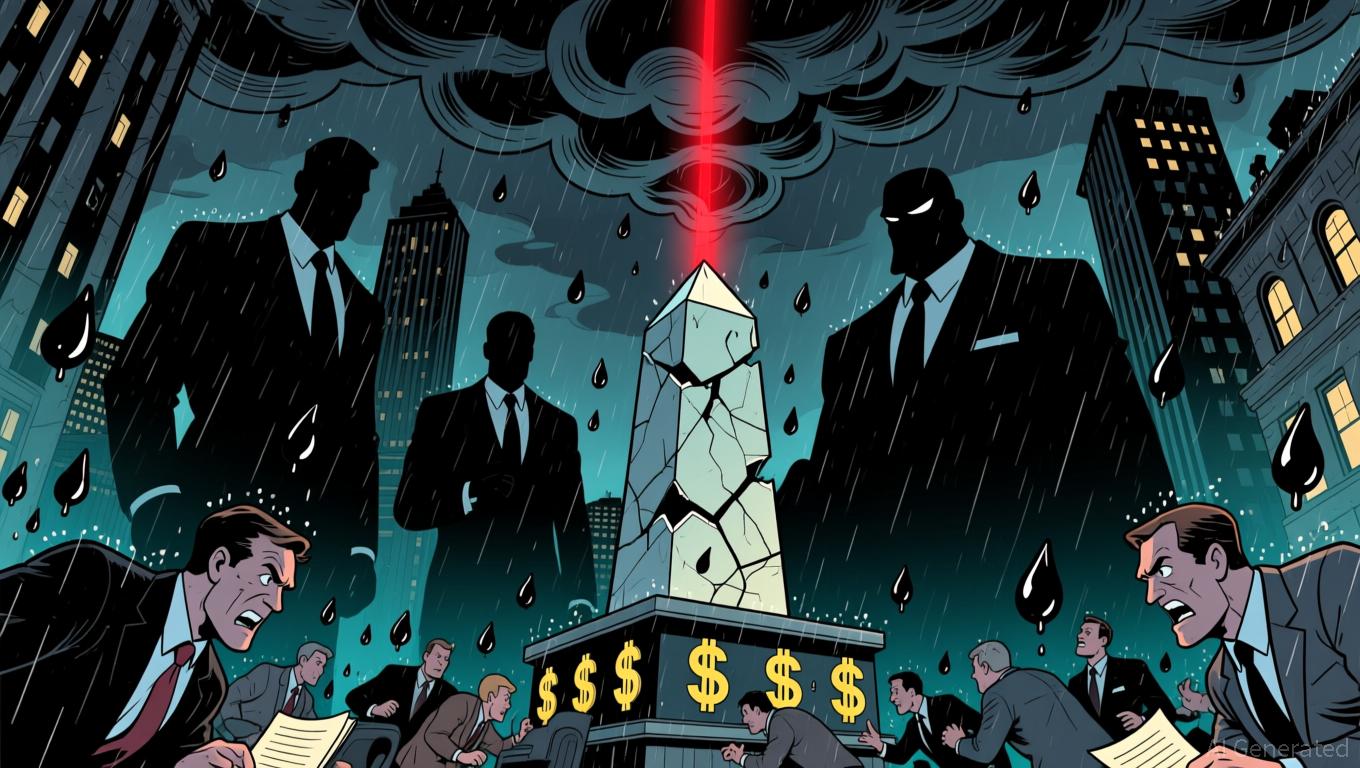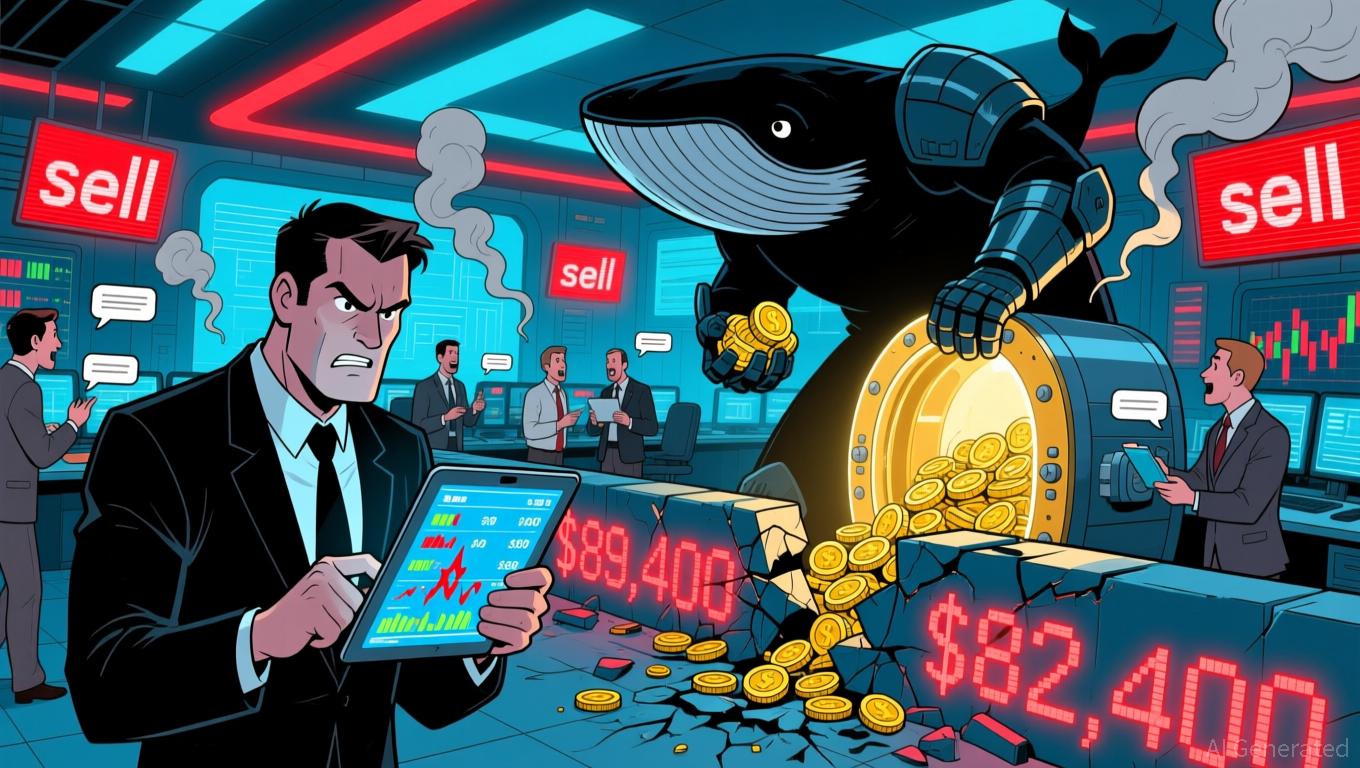Chainlink Is ‘Essential Infrastructure’ for Tokenized Finance, Says Grayscale Research
Grayscale is positioning Chainlink as critical infrastructure for the growing market of tokenized assets, according to a new research report.
The asset manager's research arm argues that Chainlink’s suite of services, spanning real-world data feeds, compliance tooling, and blockchain interoperability, solves many of the real-world frictions that block wider adoption of blockchain-based finance.
Chainlink is best known for powering “oracles,” which feed off-chain data like asset prices to smart contracts. But its newer offerings go much further. The Cross-Chain Interoperability Protocol (CCIP), for instance, allows tokens and messages to move between chains, something that came into focus during a test with J.P. Morgan’s Kinexys and Ondo Finance.
Grayscale sees Chainlink’s LINK token as offering diversified exposure to crypto’s infrastructure layer, per the report. “Chainlink is the critical connective tissue between crypto and traditional finance,” the report rsaid. “It can already be considered essential infrastructure in blockchain-based finance.”
The report pegs the tokenization market at $35 billion today, still a fraction of the global asset base, but notes that Chainlink’s integration with firms like S&P Global and FTSE Russell puts it in a strong position as traditional markets explore on-chain solutions.
Currently, Grayscale added, the total market for tokenized assets represents just 0.01% of the total value of global fixed income and equity securities. The growth of the tokenized assets market, the firm added, could “imply growth” in demand for Chainlink’s offerings.
While still small relative to global capital markets, the firm expects the figure to grow as banks, asset managers, and data providers explore blockchain rails. It’s already grown from around $5 billion in early 2023 to its current figure.
The report comes at a time when Grayscale has filed to convert its $29 million Chainlink Trust into an exchange-traded fund that would trade under the ticker GLNK on NYSE Arca. If approved, it would be the first U.S.-listed Chainlink ETF and one of the first with a staking component.
Disclaimer: The content of this article solely reflects the author's opinion and does not represent the platform in any capacity. This article is not intended to serve as a reference for making investment decisions.
You may also like
Bitcoin News Today: Bitcoin Drops 30%: Market Correction or On the Brink of a Crash?
- Bitcoin fell 30% from October's peak to $86,000, driven by regulatory uncertainty, macroeconomic risks, and institutional caution. - The U.S. government's Bitcoin for America Act proposal adds volatility by enabling BTC payments for federal obligations. - ETF outflows, whale liquidations, and bearish options signal market distress, though industry leaders call the correction "healthy." - A potential "death cross" and oversold conditions suggest further declines to $30,000 remain possible amid Fed policy

Bitcoin Updates: Bulls Encounter Major Challenge: Will Bitcoin Recover Important Levels After a 30% Decline?
- Bitcoin fell below $87,000 in Nov 2025, triggering $914M liquidations and pushing its unrealized loss ratio to 8.5%, signaling bearish sentiment. - ETF outflows hit $903M in one day, with BlackRock's IBIT losing $355.5M, attributed to institutional profit-taking and year-end risk-off moves. - Japan's $135B stimulus and Fed rate-cut uncertainty deepened selling, while Ark Invest added $39.6M in crypto firms amid price declines. - On-chain data shows $66.4M in losses from whale liquidations, but miners' ac

Bitcoin News Today: Bitcoin’s Sharp Decline: Gauging the World’s Appetite for Risk
- Bitcoin fell below $86,000, sparking stability concerns due to macroeconomic pressures, institutional caution, and shifting investor sentiment. - ETF outflows and $2B in exchange deposits, plus BlackRock's $523M redemption, intensified bearish fears as net unrealized profit hit 2025 lows. - New projects like Bitcoin Munari aim to leverage market fragmentation, but success depends on uncertain broader stability and regulatory progress. - Institutions show mixed signals: Strategy Inc. reported $2.8B gains

Fed Policy Changes and the Increasing Link with Solana (SOL)
- Fed's 2025-2026 shift from QT to QE injects liquidity, impacting Solana's volatile market dynamics. - Japan's rising JGB yields influence U.S. Treasury dynamics, while Solana's price drops 32.5% amid ETF inflows. - Solana's DApp revenue rises but active wallets plummet, while ETFs drive $342M inflows despite price declines. - Derivatives show reduced leveraged bets ($7.2B OI) but positive funding rates signal institutional bullishness on Solana's long-term potential. - Macroeconomic volatility and Solana
